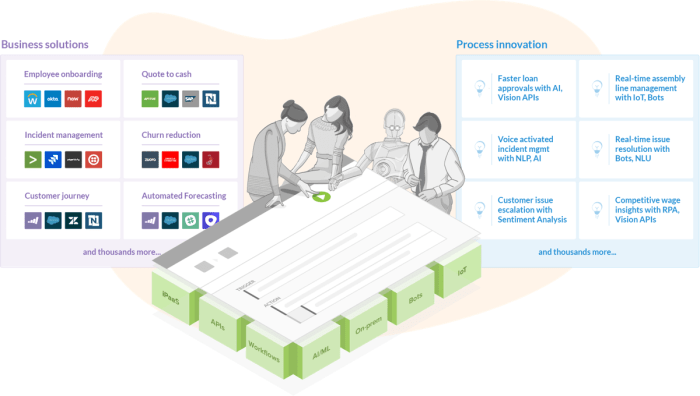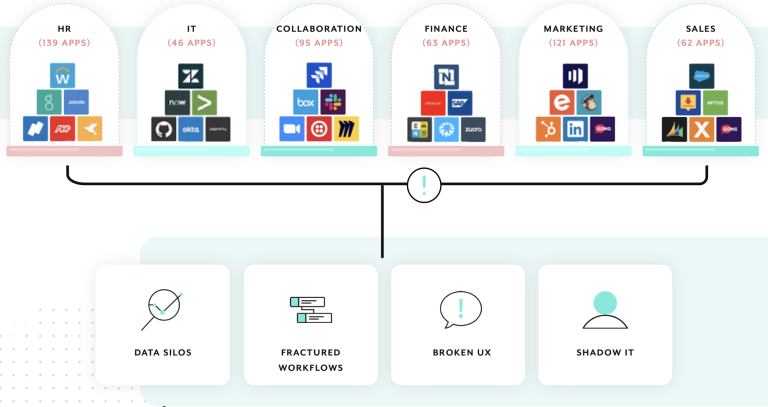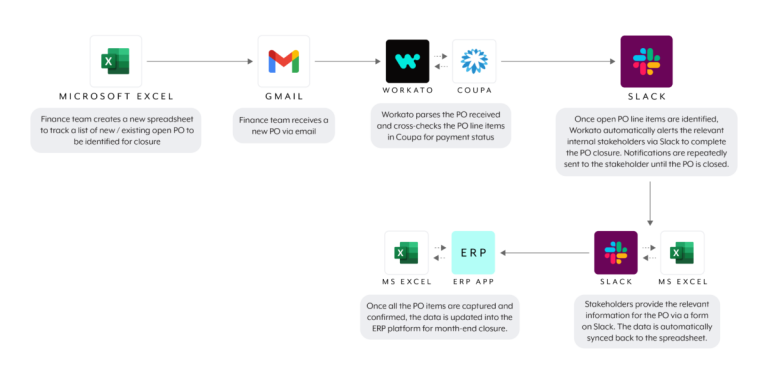Workato Embedded Your Workflow Solution
Workato Embedded empowers seamless workflow integration, offering a robust and flexible solution for automating your business processes. This innovative platform simplifies complex tasks, making data integration and automation effortless. It boasts a powerful architecture, allowing for customizable solutions tailored to your specific needs.
The platform’s core functionalities encompass a wide range of features, from data transformation and manipulation to seamless integration with various systems and platforms. This makes Workato Embedded an ideal choice for businesses seeking to optimize their operations and streamline workflows across departments.
Introduction to Workato Embedded
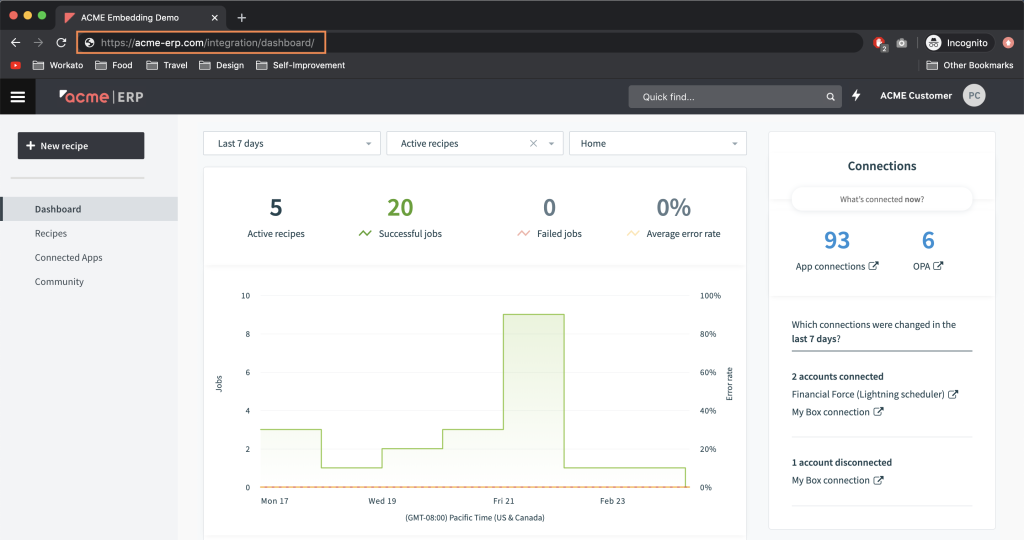
Workato Embedded is a powerful integration platform that seamlessly integrates with existing applications and systems. It’s designed for organizations needing to automate workflows and manage data flows within their specific environments. This approach avoids the complexities and limitations of traditional integration methods, streamlining processes and boosting efficiency.
Workato Embedded provides a comprehensive set of tools to connect and manage data sources, enabling organizations to automate tasks and streamline operations. It offers a flexible and adaptable architecture, allowing businesses to customize their integration solutions based on their specific needs and requirements.
Core Functionalities of Workato Embedded
Workato Embedded facilitates the creation and management of custom integrations. This includes defining data flows, mapping fields between systems, and establishing automated triggers and actions. Its core functionalities encompass the building, testing, and deployment of integration processes. The platform’s modular design allows for the addition of new functionalities as required.
Key Benefits of Utilizing Workato Embedded
Workato Embedded offers a range of benefits, including enhanced efficiency and productivity. Reduced manual intervention minimizes errors and frees up staff to focus on more strategic tasks. The platform’s ease of use accelerates integration development, reducing the time to market for new applications and processes. Furthermore, its scalability allows for seamless adaptation to evolving business needs.
Comparison with Other Similar Tools
This table compares Workato Embedded with other prominent integration platforms, highlighting key differences and advantages.
| Feature | Workato Embedded | Other Integration Platforms (e.g., MuleSoft, Dell Boomi) |
|---|---|---|
| Deployment | Embedded within existing systems, on-premise or cloud-based deployments are possible. | Typically cloud-based, with on-premise options often requiring significant investment and technical expertise. |
| Scalability | Scalable to accommodate growing data volumes and increasing integration needs. Adapts to the specific architecture of the existing system. | Scalability is often achieved through cloud-based infrastructure, but integrating with legacy systems can present challenges. |
| Customization | Highly customizable, allowing for tailored integrations that precisely meet the requirements of individual workflows. | Customization is often possible, but might involve a steeper learning curve and greater technical overhead compared to Workato Embedded. |
| Integration with Existing Systems | Direct integration with existing systems is possible, facilitating seamless data exchange without the need for extensive transformations. | Integration with legacy systems may require significant configuration and data mapping efforts. |
Use Cases and Applications

Source: workato.com
Workato Embedded offers a powerful approach to integrating various applications and systems within an organization’s existing infrastructure. Its ability to seamlessly embed workflows and automation directly into applications provides significant benefits in streamlining business processes and enhancing operational efficiency. This section will detail common use cases, highlight the streamlining capabilities, and illustrate integrations with different systems.
Common Use Cases
Workato Embedded excels in scenarios where real-time data processing and automation are critical. Its flexibility allows for tailored solutions across various departments and functions. Five common use cases include:
- Enhanced Customer Onboarding: Workato Embedded can automate the onboarding process, collecting data from various sources and instantly updating customer profiles in the CRM system. This ensures a smooth and efficient onboarding experience for new customers.
- Automated Data Validation and Cleansing: Embedded workflows can validate and cleanse data from diverse sources before it enters the central database, ensuring data quality and integrity. This is particularly useful in preventing inconsistencies and errors in downstream processes.
- Real-time Order Fulfillment: Embedded processes can trigger actions based on order updates, such as automatically updating inventory levels, initiating shipping labels, or sending notifications to stakeholders. This ensures a seamless and rapid order fulfillment process.
- Personalized Recommendations: Workato Embedded can integrate with product catalogs and customer data to provide personalized recommendations to customers. This enhances the user experience and increases sales conversions.
- Intelligent Reporting and Dashboards: Embedded data integration allows for the automatic population of dashboards and reports with real-time data from multiple sources. This provides executives and stakeholders with a clear and concise view of key metrics and performance indicators.
Streamlining Business Processes
Workato Embedded significantly streamlines business processes by automating tasks and improving data flow. Instead of manual data entry and transfer, it allows for automated, real-time integration, reducing errors and improving response times. This leads to significant time savings and improved operational efficiency across departments.
System Integrations
Workato Embedded can integrate with a broad range of systems and platforms, including:
- CRM Systems (e.g., Salesforce, HubSpot): Integrating with CRMs enables automated data entry, customer interaction tracking, and personalized communications.
- ERP Systems (e.g., SAP, Oracle): Integration with ERPs ensures smooth data flow between various business functions, optimizing resource allocation and financial management.
- E-commerce Platforms (e.g., Shopify, WooCommerce): Integration with e-commerce platforms can automate order processing, inventory management, and customer service tasks.
- Marketing Automation Tools (e.g., Marketo, Pardot): Workato Embedded can integrate with marketing automation tools to automate marketing campaigns, segment customers, and personalize communications.
Application Scenarios
The following table demonstrates how Workato Embedded can be applied in different scenarios:
| Application Scenario | Input | Process | Output | Tools Used |
|---|---|---|---|---|
| Order Fulfillment | Order details, inventory levels | Order processing, inventory update, shipping label generation, and notification to stakeholders | Fulfilled order, updated inventory, shipping label, notifications | Workato Embedded, e-commerce platform, shipping carrier API |
| Customer Onboarding | Customer registration details, various external systems | Data validation, profile creation in CRM, account setup, and welcome email generation | Customer profile in CRM, account setup, and welcome email | Workato Embedded, CRM system, email service provider |
| Data Cleansing | Raw data from various sources | Data validation, cleaning, transformation, and loading into the target database | Cleaned and validated data in the target database | Workato Embedded, data sources, target database |
Architecture and Implementation
Workato Embedded offers a unique approach to integrating data and workflows within applications. Its architecture is designed for seamless integration and flexibility, allowing for customized solutions tailored to specific business needs. This section delves into the technical intricacies of Workato Embedded, including its components, implementation steps, potential challenges, and best practices for achieving robust and scalable solutions.
The core strength of Workato Embedded lies in its modular design. This allows developers to selectively incorporate Workato’s capabilities into their existing applications, rather than requiring a complete overhaul. This modularity also facilitates easier maintenance and updates.
Technical Architecture
The Workato Embedded architecture comprises several key components working in concert. These components include a lightweight runtime engine, a data connector framework, and a declarative workflow engine. The runtime engine handles the execution of workflows, while the data connector framework facilitates interaction with various data sources. The declarative workflow engine enables the creation of complex data transformations and actions, all defined in a visual interface. The interplay between these components enables a streamlined and adaptable data processing pipeline.
Implementation Steps
Implementing Workato Embedded typically involves several phases. First, developers integrate the Workato Embedded runtime into their application. Next, they configure the data connectors to access relevant data sources. This involves defining connection parameters and mapping data fields. Finally, they create and configure the workflows to process data and execute desired actions. Thorough testing and validation are crucial during each step.
Common Implementation Challenges
Some common hurdles during implementation include ensuring compatibility with existing application architectures, managing data security and privacy within the embedded system, and overcoming potential performance bottlenecks. Addressing these challenges requires careful planning and thorough testing. For example, understanding the application’s existing infrastructure and potential performance limitations is vital.
Best Practices for Robust and Scalable Solutions, Workato embedded
Employing best practices ensures the longevity and scalability of Workato Embedded implementations. This includes adopting a modular design approach, separating concerns between the embedded system and the host application, and performing comprehensive testing at each stage. Adhering to these practices minimizes integration issues and maximizes the system’s overall performance.
Data Flow Diagram
+-----------------+ +-----------------+ +-----------------+ | Data Source 1 | --> | Workato Embedded | --> | Data Destination | +-----------------+ +-----------------+ +-----------------+ | | | Runtime Engine | | | | | | Data Connectors| | | | | | Workflow Engine | | | | | +-----------------+ | | +-----------------+ +-----------------+ | Data Source 2 | --> | Workato Embedded | --> | Data Destination | +-----------------+ +-----------------+ +-----------------+
This diagram illustrates the data flow within a Workato Embedded system. Data from multiple sources (Data Source 1 and Data Source 2) flows into the Workato Embedded system, where the runtime engine, data connectors, and workflow engine process and transform the data. The processed data is then delivered to the respective destinations.
Security and Maintenance
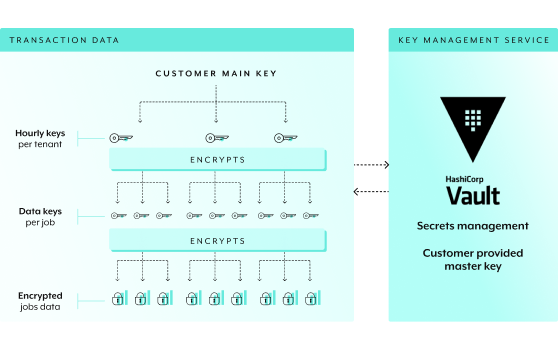
Workato Embedded solutions, while offering significant advantages, require robust security measures and well-defined maintenance strategies. Proper security protocols prevent unauthorized access and data breaches, while proactive maintenance ensures optimal performance and ongoing functionality. This section Artikels key considerations for securing and maintaining Workato Embedded implementations.
Security Considerations
Security is paramount in any embedded system, and Workato Embedded is no exception. Protecting sensitive data and ensuring the integrity of the system is crucial. Potential vulnerabilities need careful assessment and mitigation. This includes considerations for data encryption, access controls, and regular security audits. Furthermore, adherence to industry best practices and compliance standards is essential.
Maintenance Strategies
Maintaining Workato Embedded solutions involves a multifaceted approach. Regular updates, thorough testing, and comprehensive documentation are vital for ensuring long-term stability and reliability. A well-defined update process minimizes disruption and maximizes efficiency. This includes careful consideration of dependencies and potential conflicts during updates.
Potential Risks and Mitigation Strategies
Several risks can impact Workato Embedded solutions. These include vulnerabilities in the underlying infrastructure, unauthorized access attempts, and potential data breaches. Mitigation strategies involve implementing robust security measures, including access controls, encryption, and intrusion detection systems. Regular security assessments and penetration testing can help identify and address vulnerabilities before they are exploited. Furthermore, establishing a well-defined incident response plan will help address security breaches effectively.
Security Measures for Workato Embedded Integrations
A structured approach to security is essential. The following list of Artikels’ critical security measures for Workato Embedded integrations:
- Employ strong passwords and multi-factor authentication for all user accounts.
- Implement data encryption at rest and in transit to protect sensitive data.
- Regularly update Workato Embedded components and dependencies to patch known vulnerabilities.
- Conduct regular security audits and penetration testing to identify potential vulnerabilities.
- Establish clear access control policies to restrict access to sensitive data and resources.
- Monitor system logs for suspicious activity and implement alerts for potential security breaches.
- Implement intrusion detection and prevention systems to detect and block malicious attacks.
Security Vulnerability Analysis
Identifying and addressing potential security vulnerabilities is crucial for maintaining a secure system. This table lists Artikels’ potential vulnerabilities and corresponding countermeasures:
| Potential Security Vulnerabilities | Countermeasures |
|---|---|
| Unauthorized Access | Strong authentication, access controls, and regular security audits. |
| Data Breaches | Data encryption, secure storage, and incident response plans. |
| Malware Infections | Regular software updates, anti-virus software, and secure code practices. |
| SQL Injection | Input validation and parameterized queries. |
| Cross-Site Scripting (XSS) | Output encoding and input validation. |
Ultimate Conclusion: Workato Embedded
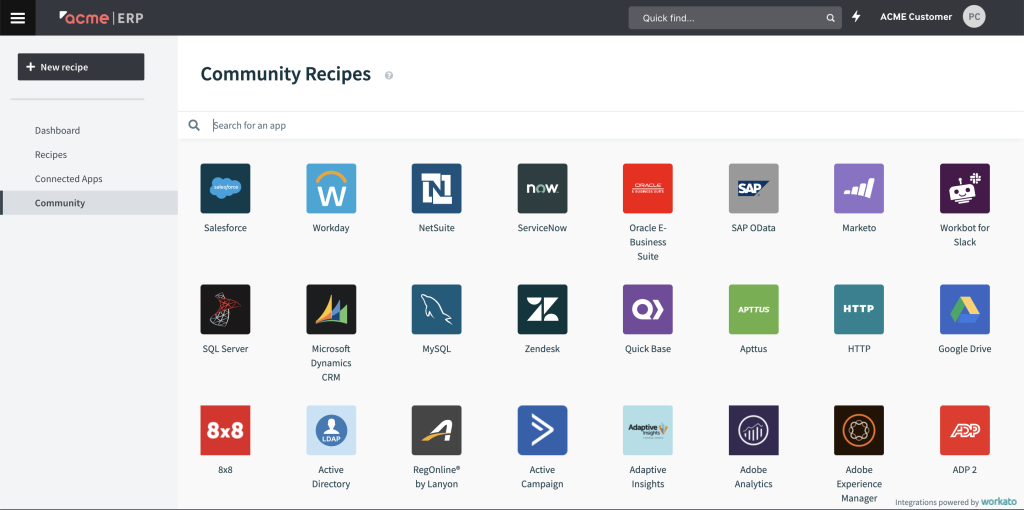
In conclusion, Workato Embedded provides a comprehensive and adaptable solution for modern workflow management. Its ease of use, combined with robust security features and extensive customization options, makes it a compelling choice for organizations looking to enhance efficiency and productivity. By understanding its architecture, use cases, and security considerations, businesses can effectively leverage Workato Embedded to drive significant improvements in their operational processes.

